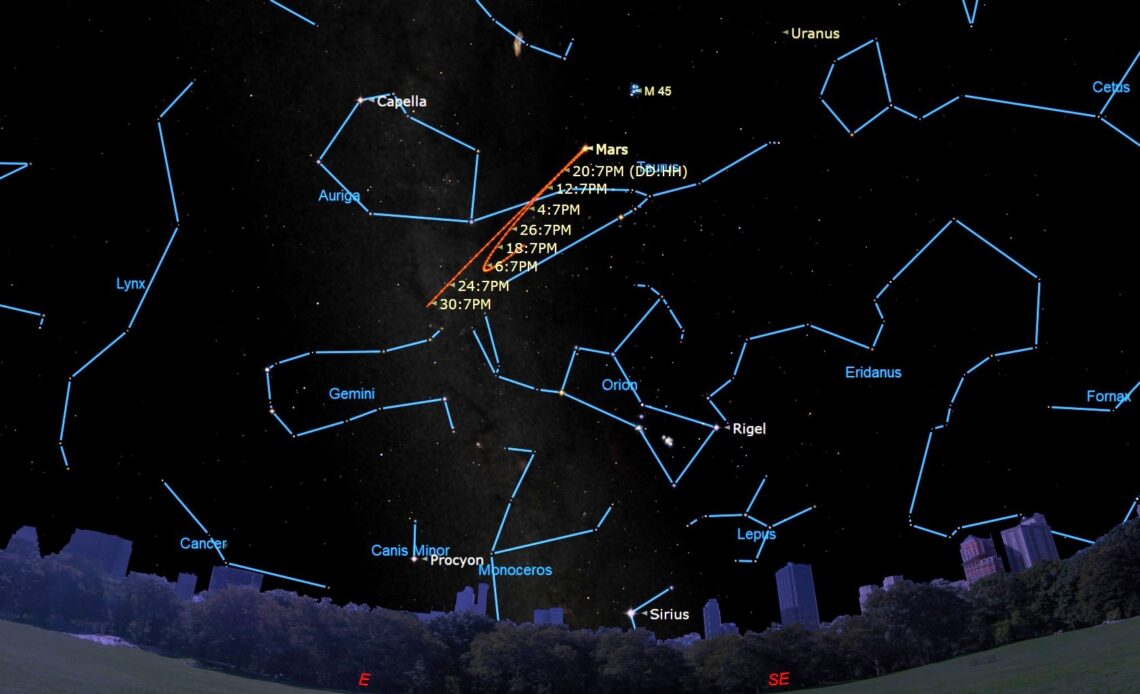Mars will reverse directions in the sky tonight.
On Thursday (Jan.12), Mars will end its retrograde motion which has seen it moving westward through the night sky. Starting tonight, the Red Planet will resume its usual eastward, or “prograde” motion past the constellations.
According to In the Sky (opens in new tab), Mars will be in the constellation of Taurus as it leaves retrograde motion. Observers from New York City should look to the eastern horizon during the evening to see it. The Red Planet will appear 4 degrees above the horizon at around 5:10 p.m. EST (2217 GMT) before it reaches its highest point in the sky, 7 degrees over the southern horizon, at around 8:48 p.m. EST (0148 GMT). Mars will then disappear from view at around 3:30 EST a.m. (0830 GMT) on Friday morning (Jan. 13) when it sinks below 8 degrees above the horizon to the northwest.
Related: See a possible naked-eye comet at its closest to the sun on Thursday (Jan. 12)
The reversal of direction demonstrated by Mars this week is typical of the solar system planets further out from the sun in comparison to Earth. Every few months the outer planets periodically reverse direction after they pass opposition.
A planet in opposition is opposite to the sun in the sky, only the outer planets, Mars, Jupiter, Saturn, Uranus and Neptune can exist in this astronomical arrangement that doesn’t happen for the inner planets Venus and Mercury. Mars was last in opposition, in a line with the Earth and the sun with our planet in the middle, on Wednesday, Dec. 7. This is also when the Red Planet began its retrograde motion backwards through the sky.
This retrograde motion for the planets is actually caused by Earth’s own journey around the sun. As our planet orbits its parent star, our perspective from the surface changes due to Earth’s motion. This results in the apparent shifts in positions of astronomical objects like Mars, and as the planets move from side-to-side on an annual basis their motion through the sky can appear reversed.
Following the end of Mars’ retrograde motion over the coming weeks, Mars will reach its highest point over the horizon four minutes earlier each subsequent night and it will also recede in size as it appears in the night sky.
Mars will also reduce in magnitude as 2023 proceeds, dropping from -0.8 (with the minus prefix indicating a very bright object) to 0.3 by the last week of February and 0.8 by March 23.
If you’re hoping to observe Mars, our guides for the best…
Click Here to Read the Full Original Article at Space…

